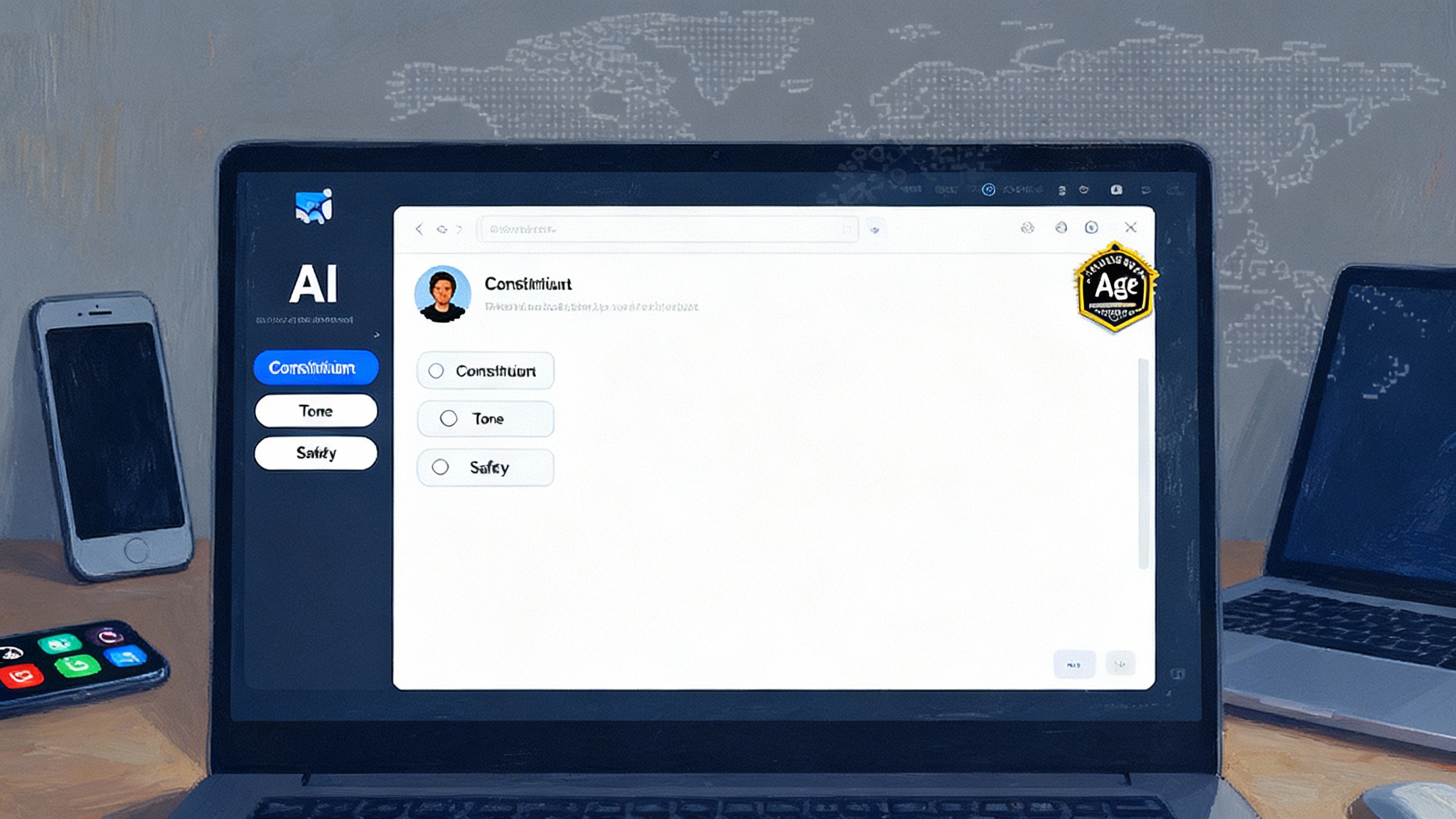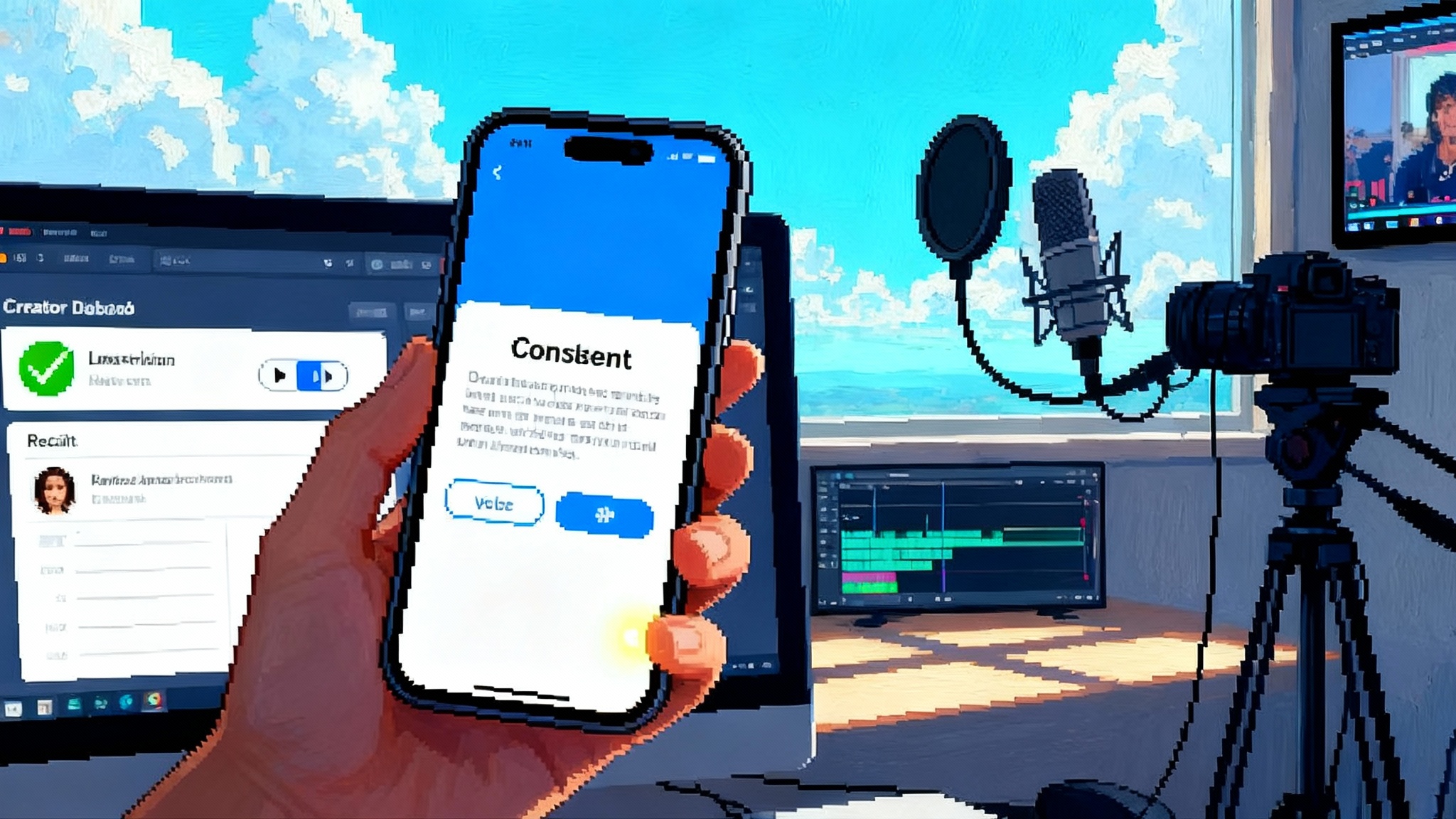The Great Data Partition: AI Browsers Face a Licensed Web
AI-native browsers are arriving just as the open web gets priced and permissioned. Here is how licenses, provenance, and new payment flows will change research, model training, and everyday browsing over the next two quarters.

Breaking: the browser grew a brain and the web grew a tollbooth
In July, Perplexity moved the goalposts for everyday browsing when it launched Comet, an AI browser. Comet does not look like a traditional address bar with tabs. It treats the whole session like a conversation, reads what is on the page, and dispatches an on-screen agent to summarize, compare, schedule, and buy. The product is rolling out broadly, and it is hardly alone. Arc, Brave, Edge, Opera, and Chrome have been layering in agentic features that summarize, reason, and take actions directly inside the viewport. Browsers are turning into research assistants that live where you work. If you are tracking how automation clicks and types across interfaces, we explored that shift in our piece on the new software social contract.
At almost the same time, publishers and infrastructure providers began to formalize the right to say yes, but at a price. On September 10, a coalition of publishers and web veterans introduced Really Simple Licensing, a robots-aware framework that lets sites declare what AI agents can crawl and under what terms, including pay per crawl and pay per inference. The Verge called it a new licensing system.
Put those two moves together and you get an inflection: AI-native browsers are arriving just as the open web becomes a permissioned marketplace. Access is no longer a binary. It is a negotiation at machine speed. That negotiation will shape what today’s models know tomorrow.
The fracture line: from robots.txt to receipts
For decades, robots.txt was a courtesy note at the door. You could ask crawlers to stay out of a folder, and polite bots would listen. As models began to train on the full mess of the web, many publishers responded with bot blocks and legal complaints. That standoff is maturing into receipts, rate cards, and enforcement.
Here is the essence of the shift:
- Instead of passively allowing crawlers, sites specify licensed purposes: search indexing, summarization, training, or answer generation. Each purpose can carry a distinct price and frequency cap.
- Instead of a blanket allow, sites can declare formats and terms: free with attribution, subscription with audit, pay per crawl, or pay per output when a model references a specific work.
- Instead of trust-only enforcement, content delivery networks and hosters are adding compliance gates tied to bot reputation, tokens, and signatures.
You are seeing the web split into knowledge enclaves. Some are public squares with clear credit lines. Some are private reading rooms that charge per seat. Others are sovereign corridors where data stays in country and access rules mirror national law.
What a permissioned web means for AI-native browsers
Agentic browsing depends on frictionless reading. A browser agent that can summarize your inbox, scan a dozen research papers, cross-check company filings, and draft a plan feels magical. The magic breaks if half the sources are fenced off or priced in ways that make the agent hesitate.
A few practical consequences follow.
- Browsers need payment choreography. If an agent needs to cross a pay-per-crawl zone, who pays, how much, and when do you ask the user? The right pattern feels like tap to pay at the point of need. The wrong pattern feels like paywalls popping up mid sentence.
- Caching becomes regulated. If your agent read a licensed page an hour ago, can it re-use the excerpt to answer a follow-up question without incurring a new fee? Licenses will start to define cache windows, acceptable quote lengths, and derivative use. Browser vendors will need a rights-aware cache that respects those windows.
- Provenance moves to the foreground. If an answer depends on licensed sources, the agent should show a source ledger that includes cost, license type, and confidence. That ledger is not just a citation list. It is a bill of materials for the knowledge in front of you. For a deeper look at verifiable trail design, see our take on likeness rights and provenance.
- Multi-tenant queries require routing. A single question may touch free encyclopedias, licensed newspapers, government datasets, and proprietary research. The browser will need a router that can estimate answer quality per source, weigh cost versus gain, and choose a path. Think of it like maps choosing between toll roads and side streets, except the tolls change depending on what you ask.
The upshot is that AI browsers evolve from a single agent into a miniature research firm inside your device, complete with budget, procurement, legal, and accounting.
Knowledge tariffs reshape model diets
We talk about model training data as if it were bulk grain. In a permissioned web, the diet gets labeled, ranked, and priced. That shift is healthy for two reasons.
First, a price tag puts a floor under quality. If credible outlets charge per crawl, labs will think twice before dumping yet another bucket of spam into their corpus. When every token has a marginal cost, teams optimize for signal over noise. You audit. You choose. You balance.
Second, price signals flow into nutrition labels for corpora. A label could list origin, update cadence, editorial standards, and known gaps. It could even carry a saturation score that warns when a dataset is already overrepresented in your mix. Teams can design a Mediterranean diet for models: heavy on primary sources, seasonal with recent updates, modest on speculative commentary, and sparse on content farms.
Expect three new artifacts to appear in training pipelines:
- A license manifest that travels with the dataset and sets allowable uses for training, fine tuning, retrieval, and commercial deployment.
- A nutrition label that summarizes composition: domains, time ranges, languages, reading levels, and known biases.
- A budget report that maps model performance gains to data spending, so leaders can answer the question: which datasets actually made us smarter.
This shift does not stop at training. Retrieval augmented generation, the technique behind many agentic features, will evolve from search then cite into license then reason. The best answers will come from sources that are both truth rich and rights clean.
Bias, truth, and the price of being right
A market for knowledge will not be neutral. If only well funded labs can afford premium sources, we risk a feedback loop where high status perspectives become ground truth because they are easiest to license at scale. Marginalized or independent voices could be underrepresented if they lack the infrastructure to publish machine readable terms or the leverage to be included in bundles.
There are countervailing forces. Collectives can bargain for small publishers. Public institutions and open knowledge projects can standardize attribution and reuse. Browser vendors can reward diversity with ranking. But the risk is real, and it is subtle. You do not notice the view narrowing day by day. You wake up to find that your agent cannot answer a local question without buying a national package.
The honest approach is to acknowledge the bias economics and design for it. Show users what is in the answer’s diet. Offer alternate paths, including slower free routes. Give communities a way to certify local corpora with clear terms. Truth will always be contested, but the process can be transparent.
The new playbook for builders, publishers, and buyers
Here is what to do in the next two quarters.
For AI browser and agent teams
- Ship a consent router. Every fetch should carry a verifiable identity and a declared purpose. Treat license negotiation as a first class step, not an afterthought.
- Build a rights aware cache. Track what you read, the license that governed it, the expiry, and the allowed reuse. Evict when terms lapse. Re price on reuse.
- Expose a source ledger. For every answer, show the sources with license type, time of access, and contribution weight. Give users a button to reroute through lower cost sources.
- Add a data budget. Let users or enterprises set monthly caps for licensed queries, with thresholds and overrides. Make cost visible at the moment of value, not at the end of the month.
For publishers and data owners
- Productize your corpus. Create machine readable feeds with terms, price tiers, and audit endpoints. Offer per seat research access, flat fee training bundles, and per answer micropayments for high value facts.
- Join a licensing collective or network. Collective bargaining lowers friction and increases discoverability. It also reduces the legal overhead for smaller outlets.
- Tag your archive. Label corrections, updates, and retractions in a way agents can query. If a pay per inference model is used, accurate update tags reduce liability and increase your value.
For enterprises buying agentic research tools
- Demand provenance and cost controls. Make vendors show you where answers come from and what they cost. Require a license manifest for any external data used in model outputs that drive decisions.
- Maintain a knowledge risk register. Track which business processes depend on licensed sources, the renewal dates, and fallback plans. Treat knowledge like any other critical supplier.
- Pilot sovereign corridors. Keep sensitive retrieval inside your jurisdiction or cloud perimeter while allowing agents to negotiate licensed access externally through vetted gateways.
For policymakers and standards bodies
- Push for interoperable license vocabularies. If every publisher invents a new flag, agents will not keep up. Align with existing content standards and privacy regimes.
- Encourage transparent accounting. Require labs and agent vendors to maintain auditable logs of licensed fetches and training events, with privacy respecting aggregates.
- Protect fair use and research exemptions. The goal is to pay creators without chilling innovation. Clear carve outs for analysis, criticism, and interoperability will help.
How pricing mechanics will actually work
A lot of the debate is abstract. The mechanics are not. Expect four patterns to dominate.
- Subscription bundles. A browser or lab pays a monthly fee for a tiered slice of a publisher network, with limits on requests per minute and per day. Good for predictable research.
- Pay per crawl. Agents pay a small fee when they cross a domain boundary and fetch at scale. Good for keeping scrapers honest and deterring bulk copying.
- Pay per excerpt. Retrieval systems pay when they include a protected excerpt above a certain length or inside a certain context. Good for long form journalism and textbooks.
- Pay per inference. An answer that references a licensed fact triggers a tiny royalty. Harder to meter, but feasible when provenance is tied to a source ledger and model logs.
Browsers will need a token wallet that understands these patterns and can post bonds with trusted networks. Think of it as a toll transponder for knowledge roads. Under the hood, you will see signed crawler identities, rate limit attestations, and on device receipts that sync when you are back online. And because data costs will sit alongside compute costs, the move to treat compute becomes a utility will feel even more urgent in product planning.
Sovereign data corridors become real
Governments have been building rules for cross border data flows for years. The difference now is that agents are active and automated, which raises the stakes. A corridor is a policy compliant path between a user, an agent, and a dataset that never violates residency or usage rules. In practice that means local inference for protected data, foreign fetches only through gateways that apply the right license and purpose, and logs that can be audited by regulators or partners.
National libraries, statistical agencies, and court systems will become anchor tenants in these corridors. That is healthy. It keeps primary sources near the people who rely on them while allowing agentic research to reference them without copying the entire archive.
The economics of understanding
A price on access changes incentives. It rewards careful reading. It exposes the real cost of keeping knowledge current. It penalizes sloppy sourcing and makes additives like synthetic text easier to detect and discount. Over time, you will see two curves:
- A cost down curve as licensing networks scale, caching rules stabilize, and agents get better at routing around expensive dead ends.
- A quality up curve as publishers invest in cleaner metadata, structured updates, and answer friendly formats that command higher royalties.
The intersection is where understanding becomes a service with a clear bill of materials. That is good for users who want confidence, for creators who want to get paid, and for builders who want to plan.
What breaks and how to fix it
Some things will get worse before they get better.
- Thin answers. Agents trained on open data only will feel brittle when they hit licensed gaps. The fix is graceful fallback and transparent tradeoffs.
- Paywall fatigue. If prompts turn into meters, users will revolt. The fix is to bundle, prefetch within rights, and show value before cost.
- Small publisher invisibility. If only big brands are easy to license, diversity suffers. The fix is collective networks that make it as easy to buy ten thousand small sites as one large one.
These are product problems, not just policy problems. The teams that solve them will define the experience of AI browsing for the next decade.
A 6 month roadmap for teams that ship
Month 1 to 2
- Add purpose headers to every agent fetch. Log them locally with cryptographic proofs of integrity.
- Stand up a rights aware cache with expiration and revalidation.
Month 3 to 4
- Integrate a license router and cost estimator. Show users an inline cost bar for expensive routes. Ship a free route button.
- Roll out a source ledger in the UI. Include license type, time of access, and contribution weight.
Month 5 to 6
- Negotiate a starter bundle with a licensing collective. Use it to seed high quality answers in key verticals such as finance, health, and science.
- Publish your own corpus nutrition labels for the datasets you rely on. Invite researchers to critique them. Iterate.
The ending is not the end of the open web
It is tempting to frame this as open versus closed. That misses the point. The web is not shutting down. It is growing a price tag where none existed, and with it a way to steer quality and accountability. We are entering an era of knowledge tariffs, labels, and corridors. If the last era optimized for reach, this one will optimize for receipts and reliability.
That can be a feature, not a bug, if we design it with eyes open. AI native browsers must learn to negotiate, account, and explain. Publishers must learn to package and price. Policymakers must learn to standardize without freezing progress. If we get the choreography right, the next click will not be a wall. It will be a doorway, with a clear sign that says who built the room, what it costs to enter, and why the view is worth it.
If you want to see how these patterns ripple into shopping and payments, read our take on how agentic commerce arrives. Together, these trends outline a practical blueprint for the next generation of user agents and the licensed web they will navigate.








